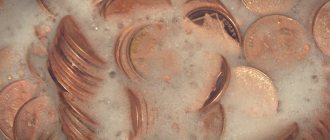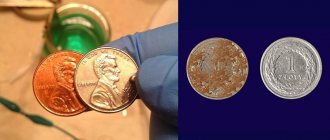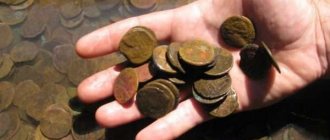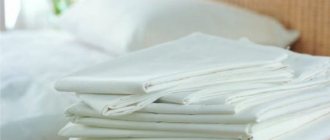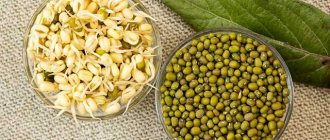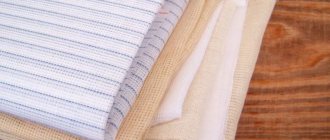Many people nowadays are engaged in collecting commemorative coins. They are released for various memorable dates. Every year a new series of such products is released.
These coins are most often made of two different metals, which is why they are called bimetallic. Silver or steel is usually used for their central part, and copper, gold or other alloys are used for the rim.
But bimetallic coins are not a modern invention. They were known back in the days of ancient Rome, and were used in medieval England and during the formation of the United States. These ancient coins are the most valuable specimens for numismatists.
USSR coin cleaning
Coins minted during the Soviet Union and preserved by some by accident, by others deliberately, acquire a special numismatic value over the years. This value becomes higher if the coins are provided with proper care. Is it possible to make them look like they were fresh from the mint?
Experts do not recommend using any special chemicals to clean coins at home. This requires special work skills and extreme caution. It is better to adopt simple, but no less effective means. For example, you can prepare a mixture of ammonia, toothpaste (any) and soda . It is applied to the coin, rubbed over the surface with a soft brush (a toothbrush will do), then the coin is washed and dried. The good thing about this product is that it doesn’t have to be used right away, but can be stored in a sealed container and used if necessary.
If the coins are not very dirty, just add a little
soda and keep the coins in this solution for several hours.
And when the metal shines, rinse the coins with clean water. If you have citric acid , dissolve half a teaspoon in a glass of hot water. This method does not require many hours of waiting for the result; on the contrary: a couple of seconds - and the coin must be removed from the solution so that the acid does not spoil the metal. The cleaned coin is washed in water and wiped with a piece of soft cloth.
A solution with ammonia (one part alcohol to nine parts water) for cleaning silver coins The time for which the coin is placed in it is one hour.
the electrolysis method is used to clean coins issued in the USSR . For this procedure, it is enough to have a power supply of six to twelve volts, a pair of clamps, glass or earthenware, or some small metal object. The concentration of the saline solution is a tablespoon per liter of water. Many people are attracted to this method by the speed of the result, and the knowledge to carry out the reaction is sufficient at the school course level.
After you have cleaned the coins in one way or another, it’s time to dry . It is very important for a better result. The washed coins are placed on a paper towel folded several times, and the top of the coins is also blotted with it. If you want to use a drying cabinet, the temperature should not exceed one hundred degrees.
Features of cleaning products made from different materials
When choosing a method and means of cleaning coins, it would be correct to take into account the material from which they are made. The right approach will quickly and effectively restore the product's shine without damaging it.
Gold and silver
Numismatists usually value items made of silver and gold. They require careful care and special storage conditions. Money made from precious metals should be stored separately from other banknotes, otherwise they will oxidize and will have to be washed much more often.
The correct choice of cleaning method and means will preserve the shine of gold coins and their value.
To clean gold and silver money, use gentle products, avoid aggressive substances and excessive mechanical impact.
Dry cleaning
You can wash stains on banknotes made of precious metals with a 10% ammonia solution. First, soak the products for several days in distilled water, and then for an hour in an ammonia solution. After the allotted time, rinse them and wipe dry.
When working with ammonia, take precautions: wear rubber gloves and open a window for ventilation.
Mechanical cleaning
Mechanical cleaning with brushes of different hardness will help remove minor dirt. To begin, soak the fines in distilled water for several days. Then polish it with a toothbrush, thoroughly cleaning the surface. To remove heavy stains, additionally use a mild soap solution.
Copper
You can clean copper coins using various means. The choice of method depends on the type of contamination. To remove red deposits, soak the fines in a 5% ammonia solution for 2 minutes. get rid of green stains , and acetic acid will help get rid of yellow stains.
To protect coppers from the negative effects of the environment, evenly cover them with patina - a special protective layer
After cleaning the coppers, perform the final stage of care:
- Rinse items with distilled water.
- Dry well with a napkin or soft towel.
- To create a protective layer, dissolve 50 g of copper sulfate in 1 liter of distilled water and add 5 g of potassium permanganate. Heat the mixture to +90 ℃.
- Dip the products into the solution and soak for several minutes. Turn them over periodically during processing so that the patina evenly covers the surface.
Nickel and bronze
Products made of nickel and bronze can be cleaned yourself at home, using improvised or special products.
Salt and vinegar
Step-by-step cleaning instructions:
- Prepare a solution based on table vinegar and salt.
- Soak nickel money in liquid.
- After soaking, treat the surface with an eraser and then polish with a soft cloth.
After cleaning, be sure to rinse the small items with running water and wipe dry with a soft cloth or paper napkin.
"Trilon-B"
For cleaning, prepare a glass container and Trilon-B product. Pour the powder into a container and add boiled water. Dip money into the solution, leave until the stains are completely cleaned, then dry and polish.
Bimetal
Bimetallic coins are an alloy of several metals. When choosing a cleaning method and means, it is important to consider the characteristics of each of them.
Safe and effective means of cleaning ten-ruble bimetal coins:
- Toothpaste . Apply a small amount of product to the brush and treat the products under running water. Remember, after cleaning the change may darken a little.
- "Coca Cola" . Soak bimetallic rubles in a carbonated drink overnight, and in the morning, rinse and dry thoroughly. To achieve maximum effect, repeat the procedure for 7 days.
- Formic acid and alcohol . Prepare a solution based on these components and immerse the products in it for 5 minutes. This treatment will restore the shine and beauty of the coins.
To clean bimetallic money, choose gentle products to avoid damaging valuable items (pictured are bimetallic coins with a denomination of 10 rubles)
Modern coins
The most common problem encountered when cleaning modern coins is rust. You will see this for yourself when you open your treasured piggy bank, into which you once threw coin after coin, but now you have decided to put it to use. Even if not for its intended purpose - but, for example, to make a coin tower together with a child.
Helps against corrosion:
- toothpaste (scrub the surface with a brush),
- sour milk (put the coins in for two to three days),
- a paste of baking soda and vinegar.
Some modern coins (for example, 10-ruble coins) are made of bimetal. They can be cleaned using a mixture of ammonia (10 percent) and soda. You need to wear gloves and rub coins with your fingertips. Another simple, and most importantly, safe way is to rub coins with an eraser. One “but” - it will require time and a lot of physical effort.
How to clean bimetallic 10 rubles
Collecting commemorative coins (including 10-ruble coins) is a popular activity for numismatists. Such coins are minted to commemorate memorable dates. Every year a new series of such coins is issued for everyday use.
Collectors can purchase missing samples in specialized stores or on the Internet. Special albums are produced for each series of commemorative coins.
Despite the availability of specimens, modern collectors prefer to “hunt” for such specimens, catching them out of circulation. Usually they don't come into their hands in the best condition. Then numismatists think about how to restore their original purity and shine to dull, dirty, yellowed coins at home.
Cleaning with folk remedies
Of course, there are also special cleaning products on sale, but they are usually very expensive, and our modest home collections are not worth such expenses. Moreover, there are effective and cheap options. Here are some of them.
Cleaning with boiling oil . This method involves boiling coins in boiling sunflower, olive or vaseline oil. After this procedure, the coins are immersed in ethyl alcohol for two minutes, and then the dirty coating is removed with a brush. The method is effective, but dangerous and requires extreme caution from the person.
Cleaning in kefir . The choice of this product is due to the fact that it contains (albeit in small quantities) acids. They are more gentle on coins (especially on patina), but after several hours of exposure to coins they provide a very good result.
Cleaning with vinegar and salt . The proportions are as follows: half a glass of vinegar to one tablespoon of salt. Vinegar can be replaced with citrus juice (lemon or orange). Make sure all the salt has dissolved and soak the coins in the solution for five minutes. If the coins are very dirty, the duration of the procedure can be increased. It is necessary to rinse coins especially carefully, since if you do not wash off the solution completely, the coins will turn blue-green.
Using ketchup (or Tabasco sauce) . There is nothing surprising in this unexpected recipe, since the ketchup and sauce contain vinegar and salt. The coins are immersed in the sauce for three minutes.
The only negative is that the coins may take on an orange tint due to tomatoes. But it's even beautiful.
There are several recommendations to keep in mind, regardless of which cleaning method you choose:
- do not use aggressive acids (irreversible changes may occur to the coin),
- Do not use metal brushes (they spoil the patina),
- Do not use GOI grinding paste (it will damage the embossing),
- Coins should only be wiped with soft cloths.
How to store it correctly?
As soon as a novice numismatist gets his first copy of a valuable coin, the first question that arises is: where to put it for storage? What usually comes to mind are banal and completely unsuitable options for such a task, such as a shoe box or a simple plastic box.
If we are talking about a serious hobby with the possibility of turning it into a long-term investment, it is better to immediately take care of purchasing high-quality “storage”. It will help prevent damage to coins during storage and preserve their appearance. For this purpose, specialists have created and tested special containers for storing any numismatic collections.
The most common options: an album for coins, holders (holders) made of cardboard with a transparent window, special tubes, tablets, etc. Of course, such products are additional expenses, but they pay off handsomely, because even with long-term storage, the collection of bimetallic coins will be perfectly preserved.
Cleaning with soapy water
Copper coins will require a special approach . A solution prepared with laundry (or “Children’s”) soap will be effective for them. To make the soap dissolve better, it is first grated. Do not pour too much water; the consistency of the solution should become jelly-like. The coppers will spend at least two days in the “jelly”. They will need to be taken out several times, inspected, cleaned with a toothbrush with the bristles cut off (which means they have become stiffer), rinsed with water and returned to a soapy environment. If the end result still does not satisfy you, a similar procedure can be repeated, many times, gradually approaching the ideal option.
What you need to know about bimetallic coins
Bimetals are interesting numismatic products in their own way, requiring a delicate approach to cleaning and careful handling in general.
Peculiarities
To ensure proper “care” and storage for bimetallic coins, you need to understand what they are. The essence of such products is the combination of two metal blanks. Such coins are minted in many countries. The first examples of bimetallic coins date back to the times of the Roman Empire. For a long time, no one remembered the bimetal, and they returned to the production of coins only in the 17th century.
Interesting fact! It is noteworthy that many Russian coins theoretically fall under the concept of “bimetallic”. The fact is that for the production of banknotes (which do not contain valuable metals), a bimetallic alloy is used - copper-nickel, as a rule.
But numismatists use the term “bimetallic” to mean something completely different: the use of two types of blanks, made of different metals, in one coin. Only in this case will banknotes be of interest to collectors. True, not every bimetallic specimen can be highly rated. There are also products for which connoisseurs are willing to pay a lot. More often we are talking about specimens with distinctive features, for example, a manufacturing defect. The most expensive coins are considered to be from the Roman Empire and American proof coins minted in the 17th century.
Cleaning technology
It is advisable to clean expensive and very valuable coins without contact. Any abrasive and friction harms them and leaves scratches. Usually the bimetal is soaked in low-acid solutions for a long period of time (soap solution, weak solution of soda or citric acid). After cleaning, coins are washed in clean water and the moisture is gently collected from them with a cloth, without applying pressure (even if the coin is made of hard metal, an alloy of copper and nickel). The fact is that the fabric can leave noticeable micro-scratches on such coins.
Acidic solutions are very effective in removing dirt and stains. But they must be handled with extreme caution. Gold and silver items can easily withstand citric acid solution, vinegar, and household acidic cleaners. As a rule, these compounds do their job without damaging the coins (even if they are left in the solution for a long time). But at the same time, gold and silver are very soft metals that can be easily scratched by applying pressure when rubbing with a regular cloth or even microfiber. And scratched coins are much cheaper. Therefore, moisture is simply carefully collected from the bimetal made of gold and silver with a microfiber cloth, without applying pressure.
Copper and cupro-nickel coins do not tolerate acidic solutions very well. If such a product is kept in an acidic solution, the copper may enter into a chemical reaction, and an unnatural red color will appear. Even if the coin is made of white copper-nickel alloy (white color indicates low copper content), it may turn red. And this will have a catastrophic effect on its value: the coin will be considered damaged, since the chemical process is irreversible.
This does not mean that the acid composition cannot be used to clean copper-nickel coins, it simply cannot be left in such a solution for a long time (no longer than 10-30 seconds). Copper alloys are very dense and hard and are quite difficult to scratch. When cleaning, they can be handled less delicately.
"Coca-Cola"
This unexpected method was chosen because Coca-Cola contains phosphoric acid, which can clean coins, albeit with little contamination . The drink is poured into a small container, coins are placed in it so that they do not touch or stick to each other. According to various recommendations, the duration of treatment is from four to five hours to a week. The process can be activated if the drink is preheated or a container with a drink and coins is placed on a hot radiator.
Electrolysis as a way to clean coins
Electrolysis will help restore the glossy shine and purity of metal money. During the procedure, contaminants are destroyed by exposure to electric current.
Cleaning algorithm:
- Prepare a 6-12 volt power supply with alligator clips attached.
- Take a small metal object, but do not use a copper or brass item.
- Prepare a glass container and fill it with saline solution (1 tablespoon of salt per 1 liter of water).
- Attach one clip to a coin and the other to a metal object.
- Immerse the items in the saline solution and plug the power supply into an outlet.
- Under the influence of current, dirt and oxide will dissolve. After some time, the coin will become clean and shiny. The duration of treatment depends on the degree of contamination
- After the procedure, rinse the product with hot water and dry.
To visually familiarize yourself with the cleaning process, watch the video:
Antique pennies are often found in the ground, they gather dust in the homes of collectors and random people, and do not always look presentable. Often the products are rusty, covered in dirt, blackness and corrosion. This reduces their value. Available home remedies or professional household chemicals will help restore your coins' glossy shine, purity and radiance.
Hydrochloric acid
Hydrochloric acid is most often used to clean coins made from zinc and iron alloys . The acid solution should be weak (ratio with water - 1:10). Coins are first cleaned of rust and white deposits using a sewing needle or medical scalpel. After the “acid therapy”, the coins are washed in cold running water. Dry (and at the same time wipe) on a piece of felt or even felt boots.
It must be borne in mind that after treatment with hydrochloric acid, coins are covered with a layer of quite durable dark patina. If it needs to be removed, abrasive materials must be used.
In no case should you use concentrated acids (not only hydrochloric acid, but also acetic, nitric and others) to clean coins - they can melt the design on the coins.
Cleaning Bronze or Brass Coins
USSR money was made from brass and was called bronze. They are quite difficult to clean.
- Electrolysis. Bronze (brass) money can be purified by electrolysis. To avoid a short circuit, make sure that the coin and the electrode are securely fastened and do not touch each other.
- Ammonia. To get rid of green spots of corrosion on brass (bronze) money, dip them in ammonia for one minute. After removal, rinse with cold water to prevent unnecessary stains on the bronze coins.
- Lemon acid. Clean brass money with citric acid in the same way as silver coins (see above).
Simple and safe cleaning methods
Soap solution
This does not mean ordinary soap, but liquid soap, or alternatively, you can use dishwashing detergent. It is enough to dilute 15 ml of the product in 0.5 liters of boiled water and place specimens from the collection that require updating into a container with the resulting solution. Leave for 40-60 minutes. Then remove from the solution and wipe each coin dry with a flannel napkin. You don't need to exert much effort to avoid scratching the coin.
Ammonia solution
A simple and effective method for cleaning bimetallic coins, but the active agent should be used very carefully (the main thing is not to overexpose the product in ammonia). So, for the work process you will need a shallow saucer filled with an ammonia solution (10%). To clean a coin from “traces of time”, just hold it in the solution for 5-10 seconds.
Afterwards, carefully remove, rinse under running water and be sure to wipe the surface dry until shiny. If once is not enough, you can repeat the “soaking” procedure a couple of times (if necessary, you can increase the number of cleanings to three).
Lemon acid
A weak solution of citric acid is an excellent alternative to any detergent (but it is better to use a similar method for simple contaminants such as dust and dirt). To obtain an effective solution, it is enough to dissolve 4 g of powder in a partial glass (225 ml) of warm boiled water. Coins are placed in the prepared solution for 20-30 seconds. It is not advisable to leave the coin for a longer period, as citric acid may react chemically with copper. All that remains is to take out the coin, rinse it under running water, and dry it with a soft natural cloth. If necessary, the procedure can be repeated four times.
Soda solution
For 1 cup of boiling water, 1 teaspoon of regular baking soda is enough. Of course, you need to keep the coins longer than in citric acid (about 20 minutes). To enhance the effect, after soaking, you can delicately clean the surface of the coin with any household cleaning powder.
Non-standard cleaning methods
For those who are not satisfied with simple soaking or want to try out a non-standard method of cleaning bimetallic coins, any of the options presented below will suit their taste.
Toothpaste
Bimetal reacts well to any toothpastes; the main thing is to choose the right brush for cleaning coins: it should have thin and long bristles. For one coin, a pea-sized amount of paste is enough. Before cleaning, it is advisable to immerse each coin in warm water for a couple of seconds. Then gently brush the surface with a brush and paste. Do not press hard, otherwise scratches may remain. The “signal” to stop cleaning is the lightening of the surface of the banknote and the appearance of shine.
Formic alcohol
The mixture is considered a very effective tool for giving a coin a bright shine. Formic alcohol means a medicine represented by 1.4% formic acid combined with 70% ethanol. So, place a coin in a container with the prepared solution for no more than 3-5 minutes. The final stage is thorough polishing with a soft natural cloth. But one cannot help but note the fact that after such cleaning (as some numismatists say) the items quickly tarnish.
Coca Cola
It’s completely unconventional, but, as practice shows, it’s very effective, because the main “cleaning” element of Coca-Cola is citric acid. The technology for processing bimetallic products is similar to any of the methods described above: placing the products in a solution, then drying and polishing with a natural cloth. The only difference is the duration of the effect of the composition on the coins: for a high-quality result, a long soaking will be required (6-8 hours).
Electrolysis
An option for special aesthetes, experts in physical and chemical reactions and simply jacks of all trades. Recommendation: it is better to first try the method on ordinary coins, and only after that start cleaning collectible bimetals. To work, you will need an old mobile phone charger or a universal charger, two clamps, a metal object (copper and brass will not work) and a deep glass/ceramic container filled with saline solution. A few words about how to cook the latter. To do this, you will need regular table salt and boiled/distilled water. Ratio: 2.5 g of salt per 225 ml of water.
The clamps are fixed on the power supply, then attached - one to a coin, the second to a metal object. Both products are placed in a saline solution. Now you can safely connect the power supply. The liquid will immediately begin to become cloudy - this is a normal reaction: oxides and dirt enter the solution from the coin. After completing the procedure, the power supply is first disconnected, and the coins are thoroughly washed in hot water and polished with a cloth.
